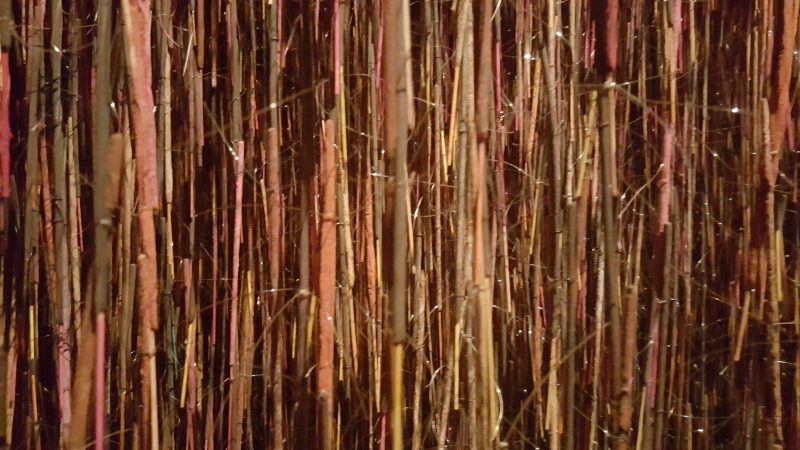Part 1:
 Hemali Bhuta’s multi-disciplinary practice is primarily concerned with the notion of an ‘in between’ or ‘transitory’ space and the elements that contain or create those spaces. For Bhuta, ‘in-between-ness’ is a plane where the limitations of dimensionality do not apply and there is a possibility for transcendence. Bhuta’s work often references ritual, both religious and domestic (building off her earlier experience as an interior designer), and she uses materials of ritual, from wax, to alum, to soap, to transform spaces and to draw attention to its often forgotten corners and architectural details.
Hemali Bhuta’s multi-disciplinary practice is primarily concerned with the notion of an ‘in between’ or ‘transitory’ space and the elements that contain or create those spaces. For Bhuta, ‘in-between-ness’ is a plane where the limitations of dimensionality do not apply and there is a possibility for transcendence. Bhuta’s work often references ritual, both religious and domestic (building off her earlier experience as an interior designer), and she uses materials of ritual, from wax, to alum, to soap, to transform spaces and to draw attention to its often forgotten corners and architectural details.

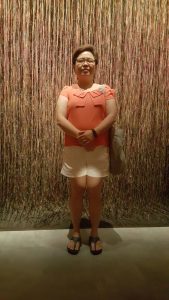
Hemali Bhuta’s Growing
Made from incense sticks of different fragrances that are strung together and suspended from above, this work is a reaction to and continuation of a previous work, The Shedding (2008). The constant cycle of shedding and growing reflects on ideas of growth, life and death, and the state of ‘in-betweenness’. Growing is also informed by the Buddhist concept of dependent co-origination: human beings are a unique species, yet form part of the larger whole that is Nature; both are subject to the same cycles of birth, growth and death. In this respect, we are like the single incense stick that aspires to be singular and ‘pure’ with its own novel fragrance, yet is also part of a larger perfumed environment. The work also alludes to ideas of tangibility, fragility and temporality. Bhuta’s use of unusual materials reaffirms her interest in the transformative power of vernacular everyday materials and their aesthetically generative possibilities.
My version of Hemali Bhuta’s Growing setup
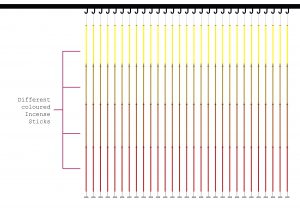
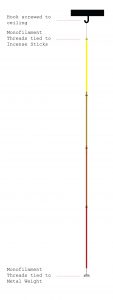
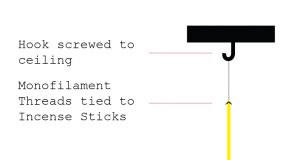
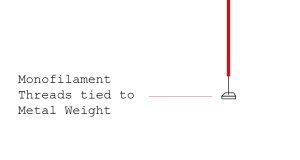
Hemali Bhuta’s other work
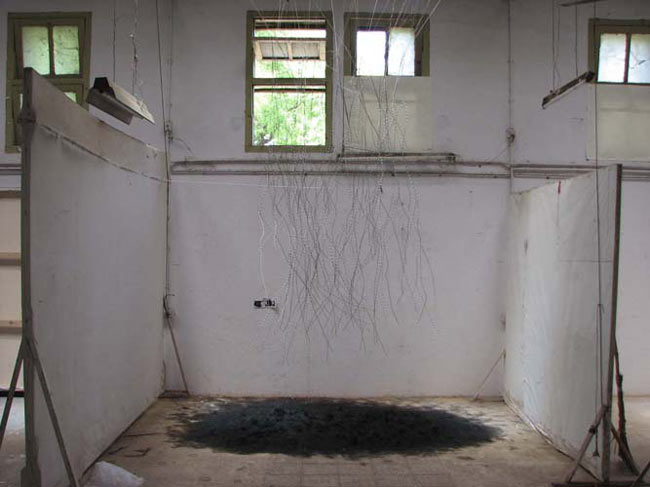
 Hemali Bhuta’s Shedding
Hemali Bhuta’s Shedding
Shedding depicts long brushes, made of black horsehair, that hang from the ceiling. The artist created vibrations that caused these brushes to shed their hair and accumulate in a thick, black carpet on the floor. Shedding references the hair of pilgrims, which when cut in religious centers, is an act of devout belief and personal sacrifice – which is further commodified and exported in the form of wigs used for a variety of transformations by its future users. The artist takes a closer look at the manifold strategies with which we hide, expose or transform ourselves, giving in to society’s constantly changing demands for individuality and belonging. Beyond an impressive aesthetic play of form and process, Bhuta raises important questions about the manipulation and the covering up of reality.
Part 2: Thoughtful interaction design
Previously, Kim Goodwin’s “Designing for the Digital Age” mentioned that a good design has to satisfy human’s needs and wants and design only happens when there is a issue, while in Jonas löwgren and Erik Stolterman’s Thoughtful Interaction Design, a good design is defined in relation to societal laws; regulations, agreements and contracts, and in relation to ideological considerations such as democratic, cultural, and environmental ideas. To bind them together, a good design would refers to a well thought solution that satisfy the end users and their society.
Jonas löwgren and Erik Stolterman’s idea of a thoughtful interaction design refers to the process that is arranged within existing resource constraints to create, shape, and decide all use-oriented qualities (structuarl, functional, ethical, and aesthetic) of a digital artifact for one or many clients. To create a thoughtful interaction design or a good design, the designer has to learn to overcome challenges, push himself to the limit and to has a critical mind. The designer has to study the man-computer interaction and formulate their own thoughts, considerations and actions for the interaction. Designer need to be flexible in their design, as their target audience may be different and different users will have different habit, traditions, and practice, and therefore every design process is unique.
 A thoughtful designed interactive experience: Snap Chat
A thoughtful designed interactive experience: Snap Chat
 Layout: Jonas löwgren and Erik Stolterman mentioned that the complex can be make less complex by organizing, structuring, and categorize, the design must be neat and categorized accordingly in order for the user to be able to use the product with ease. Snap Chat organize it’s content so that only the content the user want to see is displayed on the front page. As a designer, you might also need help in creating order and meaning in a complex world.Snapchat allows/encourage users to film with their phone vertically, which is more convenience for most phone users as we tend to keep our phone vertically. Beside being more convenience, it is also quicker to take video or photo without rotating the phone.
Layout: Jonas löwgren and Erik Stolterman mentioned that the complex can be make less complex by organizing, structuring, and categorize, the design must be neat and categorized accordingly in order for the user to be able to use the product with ease. Snap Chat organize it’s content so that only the content the user want to see is displayed on the front page. As a designer, you might also need help in creating order and meaning in a complex world.Snapchat allows/encourage users to film with their phone vertically, which is more convenience for most phone users as we tend to keep our phone vertically. Beside being more convenience, it is also quicker to take video or photo without rotating the phone.
2. Privacy: Something today society needs. The contents that the users sent out using Snapchat will be deleted the servers and the receivers’ phone, a feature which will prevent people from getting trouble from social media. Users can choose which friends they want to send to or whether they want to set it as their story, which will be visible for a day and disappear. The main concept of the Snapchat is to encourage user to create casual video or photo and send to their friends. Users don’t have to stress about having the needs to create quality video or image and do not need to worry about not receiving enough likes or views. Snapchat convinces users that it is alright to share content that is only temporarily interesting.

3. Facial recognition: Snapchat is one of the pioneer in video filter which users can easily used it to spice up their video or image. Snapchat facial recognition can read up to 2 faces, by doing so Snapchat encourage users to interact with their friend and through this interaction Snapchat received free publicity.
Overall Snapchat’s function is fairly simple and straightforward and I will say the design of it is well thought out, users are able to use the product without too much explanation.

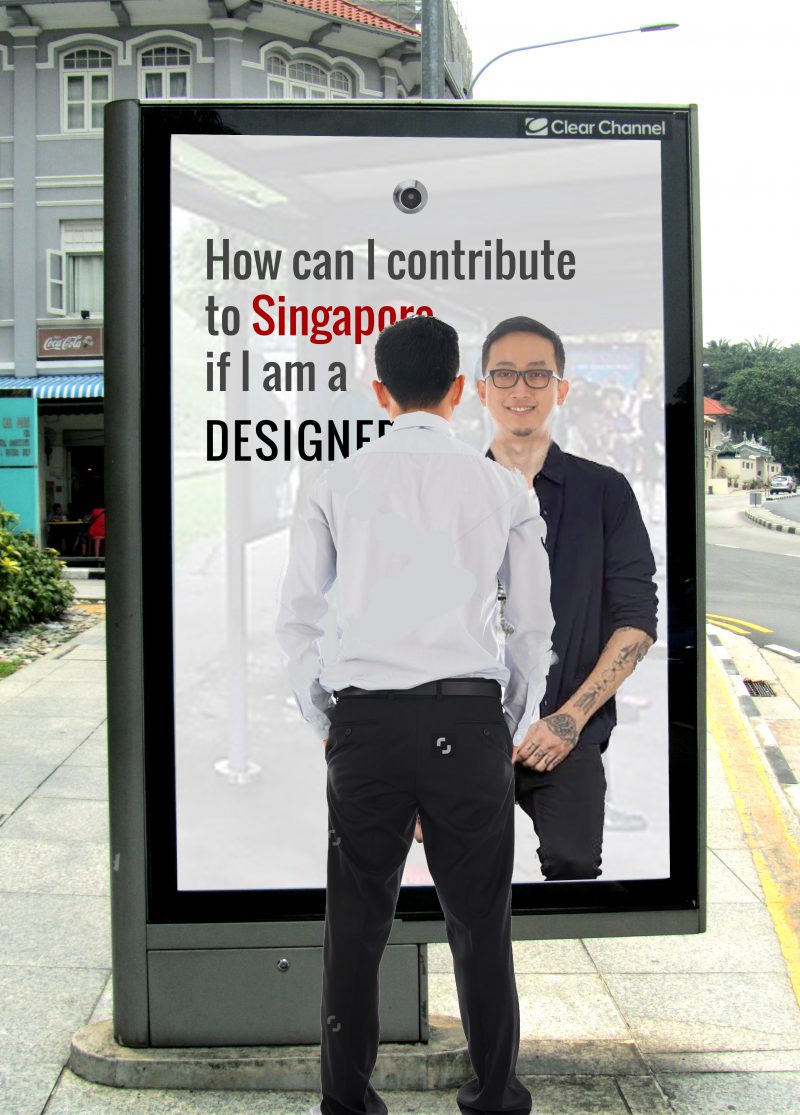
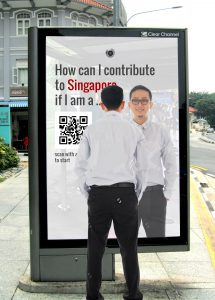
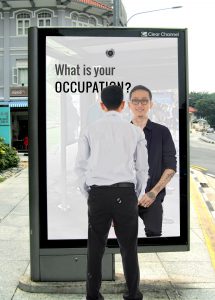
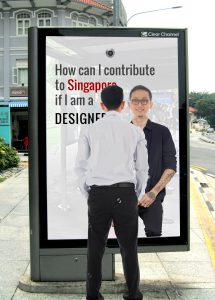
 Hemali Bhuta’s multi-disciplinary practice is primarily concerned with the notion of an ‘in between’ or ‘transitory’ space and the elements that contain or create those spaces. For Bhuta, ‘in-between-ness’ is a plane where the limitations of dimensionality do not apply and there is a possibility for transcendence. Bhuta’s work often references ritual, both religious and domestic (building off her earlier experience as an interior designer), and she uses materials of ritual, from wax, to alum, to soap, to transform spaces and to draw attention to its often forgotten corners and architectural details.
Hemali Bhuta’s multi-disciplinary practice is primarily concerned with the notion of an ‘in between’ or ‘transitory’ space and the elements that contain or create those spaces. For Bhuta, ‘in-between-ness’ is a plane where the limitations of dimensionality do not apply and there is a possibility for transcendence. Bhuta’s work often references ritual, both religious and domestic (building off her earlier experience as an interior designer), and she uses materials of ritual, from wax, to alum, to soap, to transform spaces and to draw attention to its often forgotten corners and architectural details.






 Hemali Bhuta’s Shedding
Hemali Bhuta’s Shedding
 Layout: Jonas löwgren and Erik Stolterman mentioned that the complex can be make less complex by organizing, structuring, and categorize, the design must be neat and categorized accordingly in order for the user to be able to use the product with ease. Snap Chat organize it’s content so that only the content the user want to see is displayed on the front page. As a designer, you might also need help in creating order and meaning in a complex world.Snapchat allows/encourage users to film with their phone vertically, which is more convenience for most phone users as we tend to keep our phone vertically. Beside being more convenience, it is also quicker to take video or photo without rotating the phone.
Layout: Jonas löwgren and Erik Stolterman mentioned that the complex can be make less complex by organizing, structuring, and categorize, the design must be neat and categorized accordingly in order for the user to be able to use the product with ease. Snap Chat organize it’s content so that only the content the user want to see is displayed on the front page. As a designer, you might also need help in creating order and meaning in a complex world.Snapchat allows/encourage users to film with their phone vertically, which is more convenience for most phone users as we tend to keep our phone vertically. Beside being more convenience, it is also quicker to take video or photo without rotating the phone.
